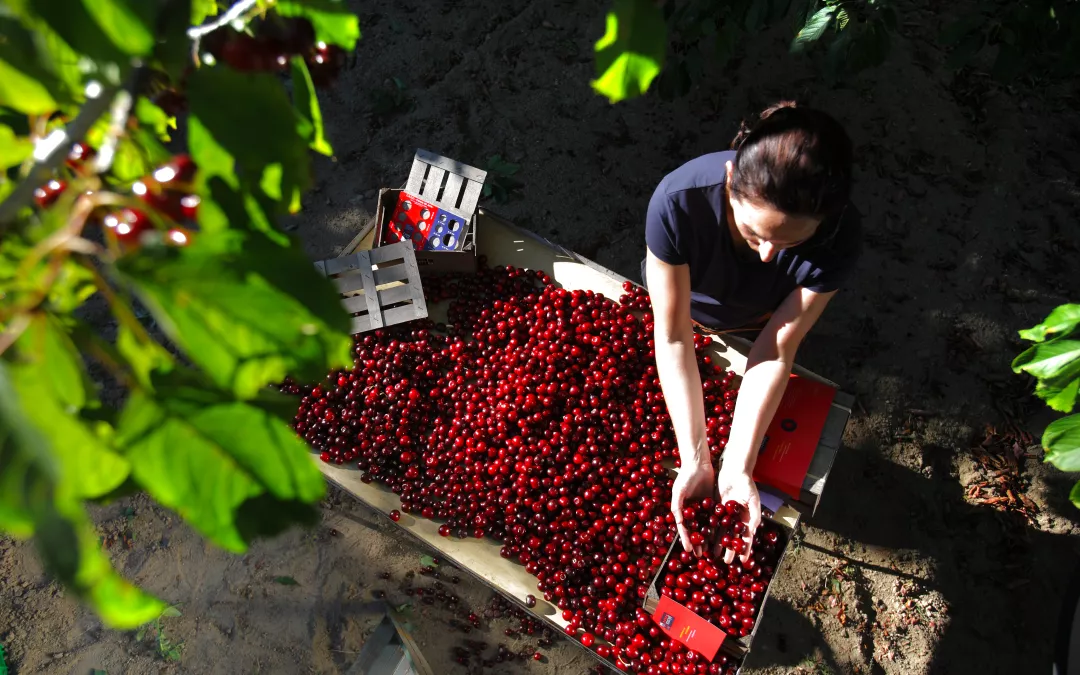Rural innovation synergies benefit Spanish cherry producers
- CAP Implementation
- Agricultural Productivity
- AKIS
- CAP Strategic Plans
- Food Supply Chain
- LEADER
- Rural Development
Synergies between the CAP's rural innovation engines are possible, as shown by the success of LEADER cooperation with an EIP Operational Group and Producer Organisations improving the competitiveness of cherries from mountain areas in Spain.
Synergies between rural innovation engines in the Common Agricultural Policy (CAP) are possible, as shown by the success of LEADER Local Action Group (LAG) cooperation with a European Innovation Partnership Operational Group (EIP OG) focused on improving the competitiveness of cherries from mountain areas in Spain.
Around 4 000 small farms in northern Extremadura’s mountainous regions by the Portuguese border are the beneficiaries of these CAP implementation synergies. The success of their GO CEREZA project offers inspiration for all the EU Member States’ LAGs and OGs. It shows the possibilities arising from LAGs and OGs working together with Producer Organisations (POs). Cost-sharing/saving actions represent a transferable model in agri-food cooperation for other local or territorial levels to consider around rural Europe.
Five LAGs covering cherry-producing territories work collectively with five POs (including cooperatives), SME, individual farmers, a research body and a cluster of climate action interests in this OG. Members joined forces to add value by gaining economies of scale through a critical mass that would not have been possible for the members if they had worked alone. Their collective aim involved adopting innovation to reinforce their common resilience against competitive threats from other cherry-producing regions in the world.
GO CEREZA’s goals to increase their share of value in the food chain continue to be achieved by applying the project’s tools and principles. These include farm-based laboratories facilitating and advancing evidence-based agronomy to inform training and guidelines on good agricultural practices linked with the associated Protected Denomination of Origin (PDO) Cereza del Jerte. Cooperation between the LAGs, OG and POs created collaborative benefits. These included certification procedures to help establish quality and awareness-raising campaigns.
Local consumers, traders and producers have gained from this project’s CAP-funded innovations. Results promote sustainable food production systems based on more and better precision agriculture approaches to production that reduce water and energy consumption costs. New genetic knowhow regarding the variety of cherry species and their resistance to different threats has also given the GO CEREZA participants competitive advantages.

Rural resilience results
There are many results that are generated by implementing the combined LEADER and OG funds in this project. A key and tactical common marketing strategy promoting the PDO not only advertises the cherries, but its multifunctional messaging simultaneously boosts consumers’ understanding about how their purchase is helping the prosperity and survival of rural communities. Customer loyalty and social capital can be built for everyone in this way.
Consumer appreciation of projects like GO CEREZA can be further advanced through cooperation on communication campaigns. One of the benefits of this project example is that the partners involved now feel more ownership and commitment to the project through the process of working on it together.
Younger and future generations of food producers can also be inspired by the OG’s improved opportunities available via technology-driven, joined-up, business development options. What’s more, cherries are a highly nutritious food source and so the success of GO CEREZA’s innovative LEADER initiative contributes directly to the EU’s aspirations for sustainable food systems.
OGs can fund a much wider mix of project types and topics during the new CAP 2023-2027 period than was eligible before, covering all CAP specific objectives. This extends beyond agri-food and forestry into social and environmental fields. Therefore, more such synergies from cooperation between LAGs, POs and OGs can become a productive and popular feature of the implementation of CAP Strategic Plans in the coming years.